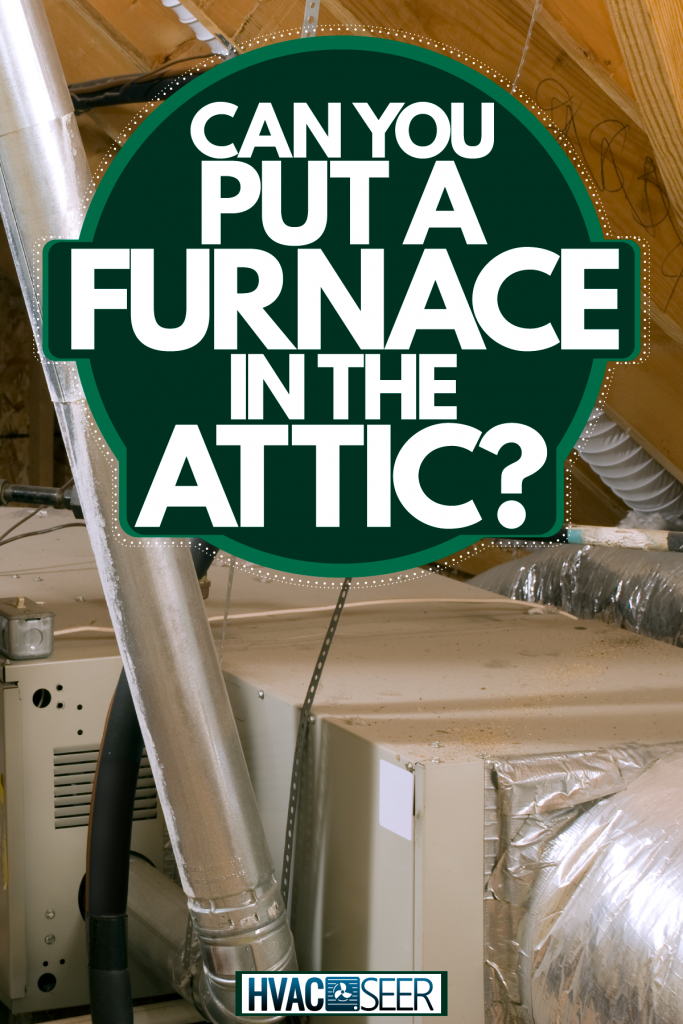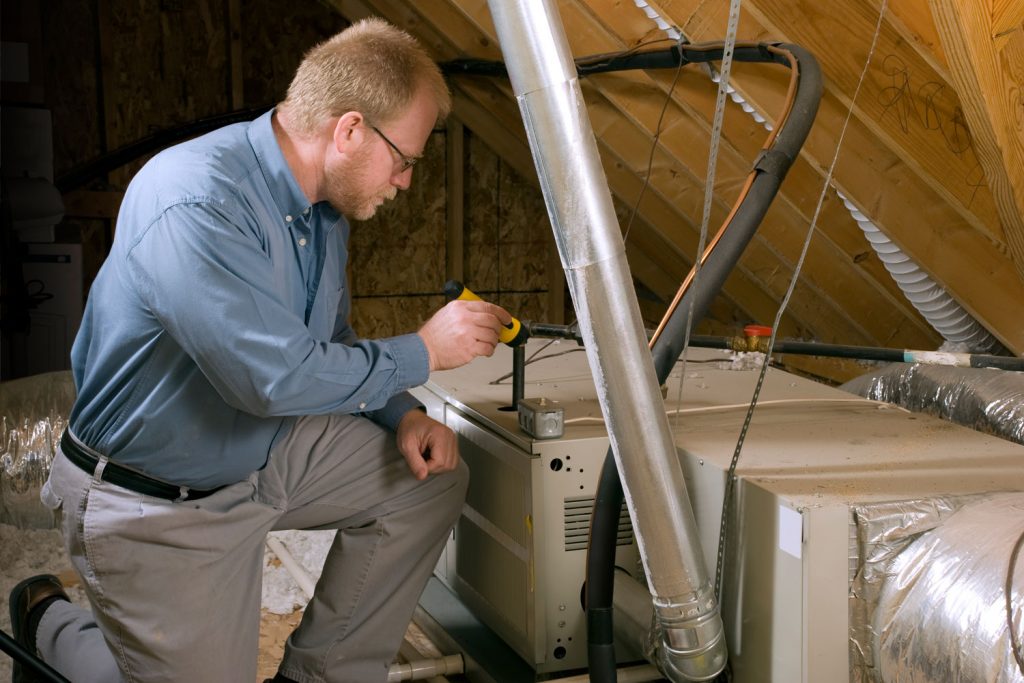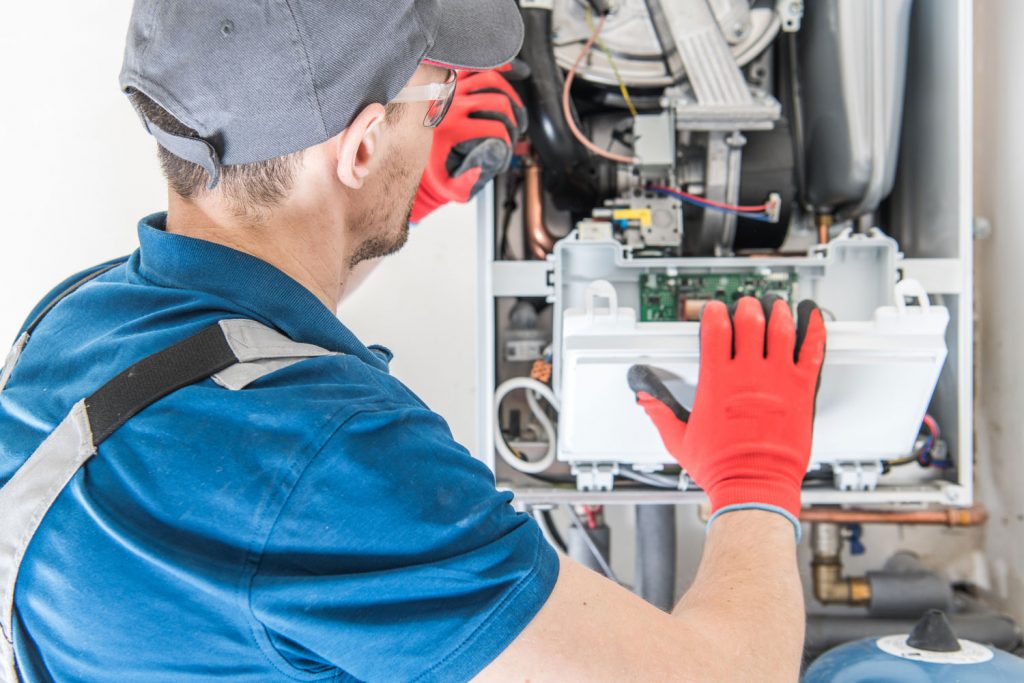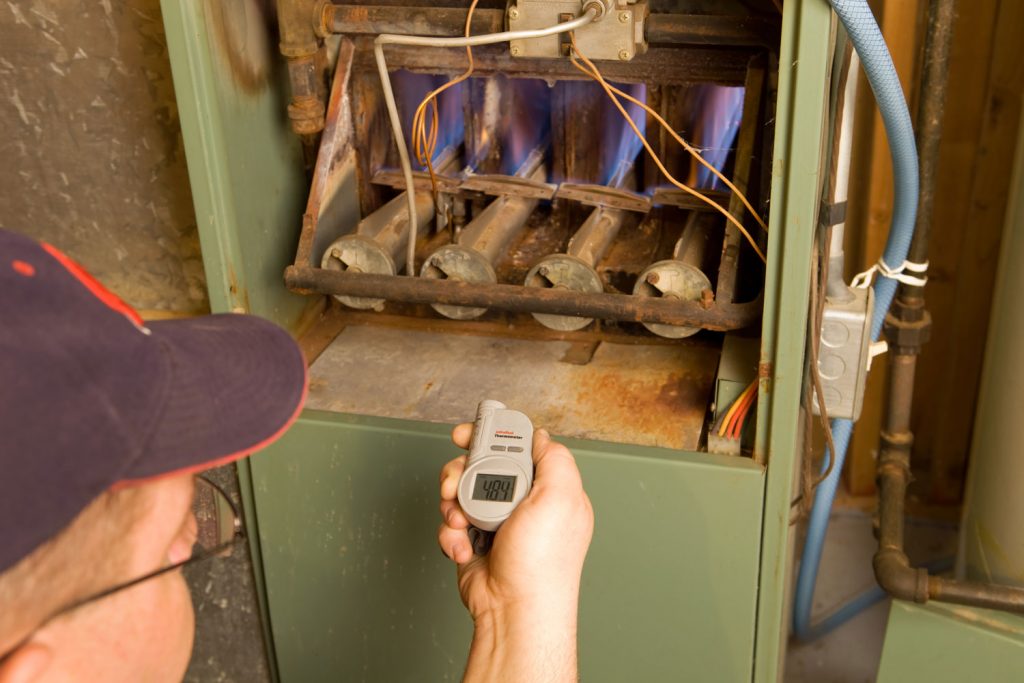Most people put their furnaces in their basement, closet, or garage. However, you may wonder if you can put your furnace up in the attic. We have researched if it's okay to put a furnace in the attic and the best ways for doing so.
Yes, you can install a furnace in your attic. Attic furnaces may be an excellent option for people with limited space or if your house doesn't have a suitable basement or closet. To avoid any problems with attic installation, it is best to have an attic furnace installed by professionals.
Now that you know how to install a furnace in the attic, keep reading to learn if it's a good idea. We will also cover how much it costs if it's safe and other relevant questions.

What Are The Benefits Of An Attic Furnace?
Having your furnace in the attic can save you a lot of space. Usually, people don't use the attic much. Often, it will be either empty or for excess storage. As a result, the attic can be the best spot for a furnace as it will leave your closet and basement clear for other purposes.
Furnaces can make a lot of noise. Putting it in the attic will make the noises harder for you to hear on the main floors of the house. As a result, you will have a much quieter, peaceful home.
When installing an attic furnace, the installation can be cheaper. This is because you can vent it right through the roof and not have to do as much ductwork. By doing less ductwork, you save money.
Attic furnaces can also provide more even heating distribution throughout the house.

Is It Bad To Have A Furnace In The Attic?
This question doesn't have a clear-cut answer. If your attic is spacious and air-conditioned, it can be great. However, an attic that gets extremely hot in the summer and, if small, can cause functionality issues.
Functionality
A high-efficiency furnace in an attic that is small and unconditioned will not be effective. This is because there tends not to be enough air for the machine to work correctly. Your furnace will have to work harder in the attic because warm air rises naturally, and your furnace will have to force the warm air to go down rather than letting it rise naturally. This can make your energy bills go up.
Damage from Extreme Temperatures
High-efficiency furnaces shouldn't be installed in attics because they can get damaged easily when exposed to extreme temperatures. If you have an attic that is conditioned, you won't have to worry about this problem.
Unable to hear if there are issues
Even though having it in the attic can be quieter, this can be a negative thing. You may not hear the furnace making noises when it has problems. As a result, problems may go unnoticed for a long time before being fixed.
Inefficient
The ductwork in the attic can have more issues. This is because attics can get extremely hot. This heat can cause small holes and leaks. This can make your air conditioning bill higher, as your AC will be less efficient.
Regulations
Another negative thing about having an attic furnace installed is that there are more regulations than there are for basement or closet installation. Closet installation is easier to service than attic installation, but there isn't much difference.
Installing An Attic Furnace

When you install an attic furnace, it is best to have a professional install it. This is because there are so many regulations that it can be hard to make sure you follow all the rules.
Regulations might be slightly different depending on where you live. However, you can click here to see some of the regulations involved in attic installation. Depending on where you live, the regulations may require you to have your unit and installation inspection to make sure it meets specifications. Always check with your local government building authority for information on permits and requirements.
For instance, you cannot install an attic furnace on carpet or tile, and there cannot be anything combustible around the unit. Wooden house beams are okay, though.
If you decide to install it yourself, make sure to have someone come in and check that your attic is suitable for a furnace. While older furnaces were okay to be installed in an attic, many newer high-efficiency ones can be damaged if they aren't in a suitable environment. Many people learn that they have to purchase a subbase to put it in the attic because there are such strict regulations on what material the unit can be placed down on.
How Much Does An Attic Furnace Cost?
When considering what furnace to get, the cost varies widely depending on whether it is gas or electric. The cost for a furnace can be as little as $2,548 or as much as $6,139. Most people will pay about $4,336 to get their furnace. Electric furnaces range from $1,000 to $6,000, while gas ones can cost between $2,000 and $10,000.
An electric furnace will cost around $2,628 a year. Gas furnaces cost slightly less at $1800 annually.
Is It Better To Put An Electric Or Gas Furnace In The Attic?
When you have an attic furnace, it can cost a lot of money to run. So, it is recommended that you install a gas furnace to save electricity.
What Size Furnace Do You Need For A 2000 Square Foot Home?
If you need a furnace for a 2000 square foot home, you normally will get a furnace of at least 50,000 BTU. However, in the attic, it is expected that it would be less effective. This means that you should actually buy a 60,000 to 72,000 BTU furnace.
How Do You Know If Your Furnace Is Dying?

When a furnace is dying, there are a lot of signs that will let you know. One thing is that your furnace will become less efficient, and your heating bills will go up. Another sign is that your furnace will start needing more repairs.
You also may start hearing popping, banging, and all kinds of weird noises coming from your machine. The blower will also start turning off and on a lot and making excessive noise.
You may also notice your furnace isn't heating as well and that the furnace's flame is yellow. A furnace should have a blue flame. If it isn't blue, that's a sign the furnace is malfunctioning.
A dying furnace can negatively impact your health. It can cause dry, dusty air, headaches, nausea, and potential carbon monoxide poisoning. If you see any streaks of soot, moisture on windows and walls, or rusting flue pipes. If you see any of these signs, go outside immediately and call a professional to check it out.
Closing Thoughts
We have discussed that attic furnaces can be cheaper to install and free up space in the rest of the house. Remember that you should have a professional install the furnace if you want it in your attic because there are very strict legal regulations for installation.
Another important thing we talked about is that an attic furnace may not be suitable for you if you have a small or unconditioned attic. We also discussed how to tell when your furnace is dying and tell if it's emitting carbon monoxide.
If you found this post interesting, click the links below to explore more on this blog.
